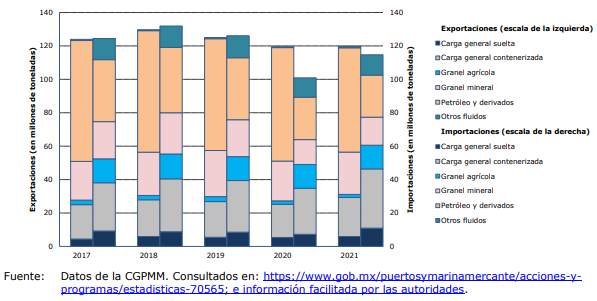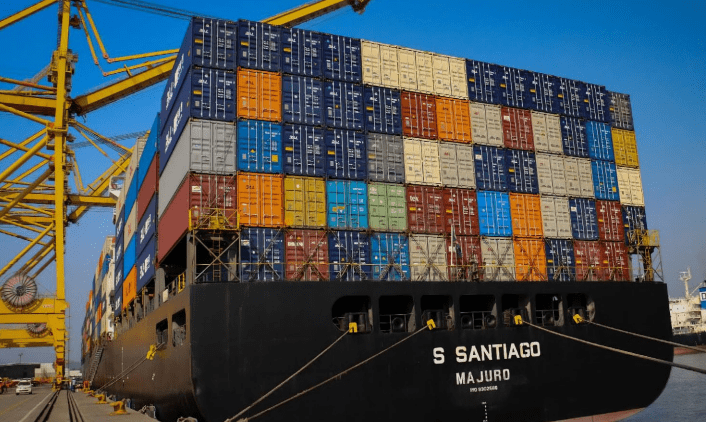Foreign trade port operations in Mexico were broken down by the World Trade Organization (WTO) by type of cargo from 2017 to 2021.
In 2021, 234.3 million tons of cargo were handled in Mexico’s ports.
This exceeded the 2020 volume, but still did not reach pre-Covid-19 pandemic levels.
Foreign trade cargo is mainly made up of hydrocarbons, containerized cargo and mineral bulk.
The port of Manzanillo is the country’s main port and one of the main ports in the region for container traffic.
Foreign trade port operations, by type of cargo, 2017-2021.
Mexico also has 15 port terminals, located outside port precincts, which are used to export salt, gypsum or phosphate rock.
Mexico also maintains a cap (49%) on Foreign Direct Investment (FDI) for companies that provide pilotage, towing, mooring, and launching services, or that are engaged in the supply of marine fuel (bunker).
However, if authorized by the National Foreign Investment Commission (CNIE), foreigners may increase their participation (up to 100%) in towing, mooring and launching services.
Port operations
According to the authorities, between 2017 and 2022, two authorizations were granted. Port pilots must be of Mexican nationality.
Shipping companies with foreign capital may provide dredging, port construction and maintenance services, using foreign vessels, provided there is reciprocity, and prior authorization from the Ministry of the Navy (Semar).
The Dirección General de Puertos (DGP) may establish tariffs for the use of terminals and the provision of port services if it determines that there is no effective competition in the port.
That is, if there is only one terminal, or a given cargo can be handled only at one terminal, or if there is only one service provider.
The criteria for determining the maximum tariffs were not revised during the period under review; the DGP determines them by considering operating and capital costs, actual and estimated traffic, and domestic and international market rates.
The maximum tariffs are set annually. In the context of this review, the authorities indicated that by 2022, 51% of port services tariffs are regulated.
During the pandemic, tariff discounts were granted and payments could be deferred from 30 to 60 days.

